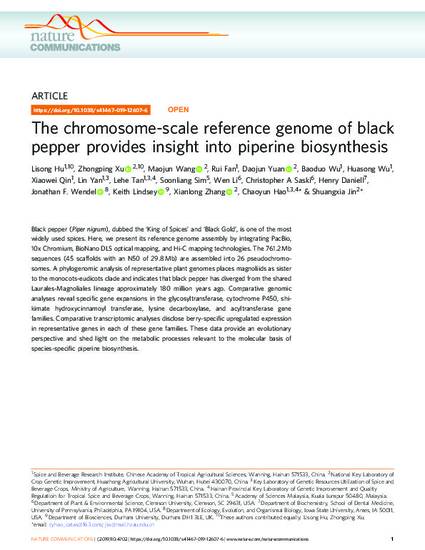
Black pepper (Piper nigrum), dubbed the ‘King of Spices’ and ‘Black Gold’, is one of the most widely used spices. Here, we present its reference genome assembly by integrating PacBio, 10x Chromium, BioNano DLS optical mapping, and Hi-C mapping technologies. The 761.2 Mb sequences (45 scaffolds with an N50 of 29.8 Mb) are assembled into 26 pseudochromosomes. A phylogenomic analysis of representative plant genomes places magnoliids as sister to the monocots-eudicots clade and indicates that black pepper has diverged from the shared Laurales-Magnoliales lineage approximately 180 million years ago. Comparative genomic analyses reveal specific gene expansions in the glycosyltransferase, cytochrome P450, shikimate hydroxycinnamoyl transferase, lysine decarboxylase, and acyltransferase gene families. Comparative transcriptomic analyses disclose berry-specific upregulated expression in representative genes in each of these gene families. These data provide an evolutionary perspective and shed light on the metabolic processes relevant to the molecular basis of species-specific piperine biosynthesis.
Available at: http://works.bepress.com/jonathan_wendel/84/

This article is published as Hu, Lisong, Zhongping Xu, Maojun Wang, Rui Fan, Daojun Yuan, Baoduo Wu, Huasong Wu et al. "The chromosome-scale reference genome of black pepper provides insight into piperine biosynthesis." Nature Communications 10 (2019): 4702. doi: 10.1038/s41467-019-12607-6.